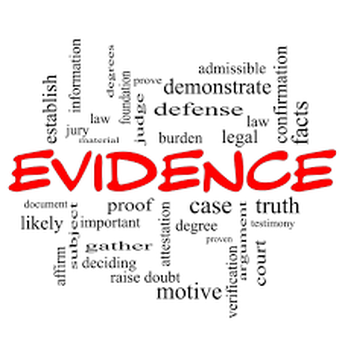Legal Blog
Federal Rules of Evidence: What You Need to Know
The Federal Rules of Evidence were adopted by Congress in 1975 to govern the introduction of evidence in United States federal courts. The 11 articles in the Rules of Evidence apply to civil and criminal trials, and combine to provide clear, concise guidelines for jurors to reach a verdict. There are 67 rules in total – not as lengthy as many court documents, but certainly no quick or easy read, either. It is not necessary for business leaders to know the rules inside and out; that's the job of San Diego business attorneys like Gehres Law Group, P.C. However, it is advantageous to understand the basics and a few of the nuances in the event a lawsuit is brought against your company.
Types of Evidence
There are four types of evidence that can be presented in federal court:
- Real evidence
- Demonstrative evidence
- Documentary evidence
- Testimonial evidence
Real evidence is often referred to as "material" or physical evidence and includes any tangible object relevant to the case. Documentary evidence is often tangible as well, in the form of a letter or document. Demonstrative evidence involves a description or model of events, while testimonial evidence comes from a witness. The Rules of Evidence apply to each type of evidence differently in different scenarios.
Relevancy
Evidence must be relevant in order for it to be admissible in court. Rule 401 states that evidence is relevant if:
(a) it has any tendency to make a fact more or less probable than it would be without the evidence; and
(b) the fact is of consequence in determining the action.
This means that evidence does not necessarily need to prove a fact conclusively in order to be relevant. Rather, it only needs to contribute to the probability of the fact being true. Rules 402-415 provide the limits of relevancy, which encompass character, habit, compromise, pleas, related statements, and other guidelines.
Witnesses
Witnesses are a crucial and potentially pivotal aspect of any trial. As such, the Rules of Evidence address the extent to which witnesses can be brought forth and questioned. For example, Rule 610 states that "evidence of a witness's religious beliefs or opinions is not admissible to attack or support the witness's credibility." Rule 613 governs the use of prior statements, as follows:
(a) Showing or Disclosing the Statement During Examination: When examining a witness about the witness's prior statement, a party need not show it or disclose its contents to the witness. But the party must, on request, show it or disclose its contents to an adverse party's attorney.
(b) Extrinsic Evidence of a Prior Inconsistent Statement: Extrinsic evidence of a witness's prior inconsistent statement is admissible only if the witness is given an opportunity to explain or deny the statement and an adverse party is given an opportunity to examine the witness about it, or if justice so requires. This subdivision (b) does not apply to an opposing party's statement under Rule 801(d)(2).
Hearsay
Rule 801 is referenced because it governs the hearsay rule. One of the most notable obstacles for both parties in a trial, hearsay is defined in Rule 801 as a statement that:
(1) the declarant does not make while testifying at the current trial or hearing; and
(2) a party offers in evidence to prove the truth of the matter asserted in the statement.
Determining what is and isn't hearsay can be difficult, and is the topic of an entire article by Gehres Law Group, P.C. The article explains:
"Consider this statement: 'I saw the defendant run through a red light and hit the plaintiff's car.' If that statement is made by an eyewitness while testifying under oath in court, it is not hearsay, because it is not an 'out-of-court' statement. On the other hand, if you are the plaintiff whose car was hit by the defendant, and a witness at the scene says to you, 'I saw him (the defendant) run through a red light and hit your car,' and you seek to testify that you heard the witness say that at the scene, the statement would be hearsay, because it was made 'out-of-court.'"
There are exceptions to the hearsay rule, including admissions of a party, spontaneous statements, statements of physical or mental state, and business records, among others.
Amendments and State Codes
The Federal Rules of Evidence are amended each year – usually in March, with the amendments taking effect in December of the same year. Additionally, many states (including California) have adopted their own evidence codes aligning with the federal rules. If your business is involved in a lawsuit, hiring a business attorney will ensure you are able to present all of the evidence allowed under the rules.

Comments